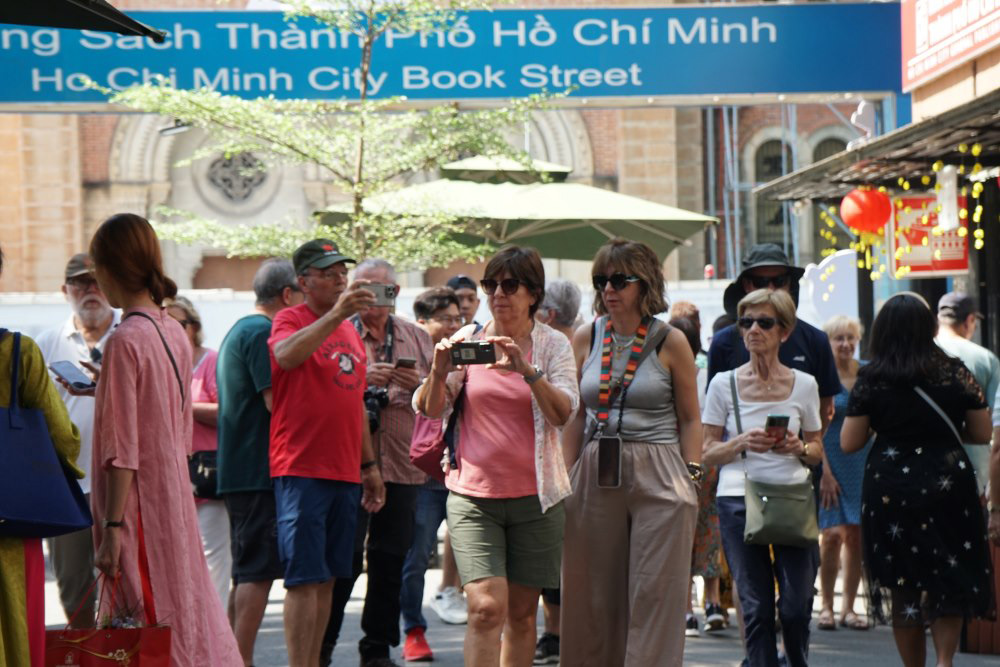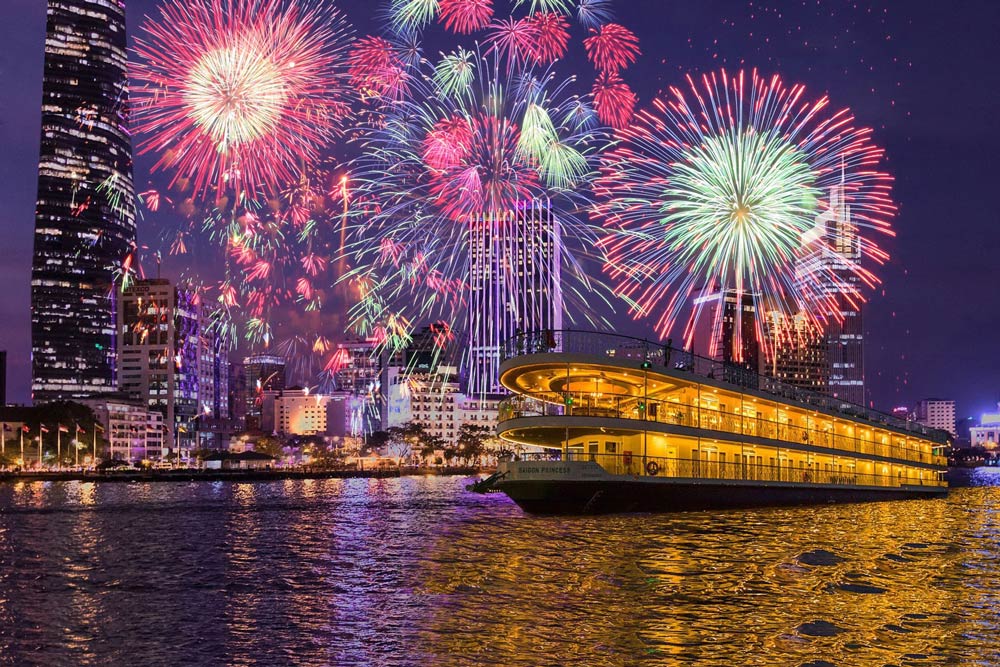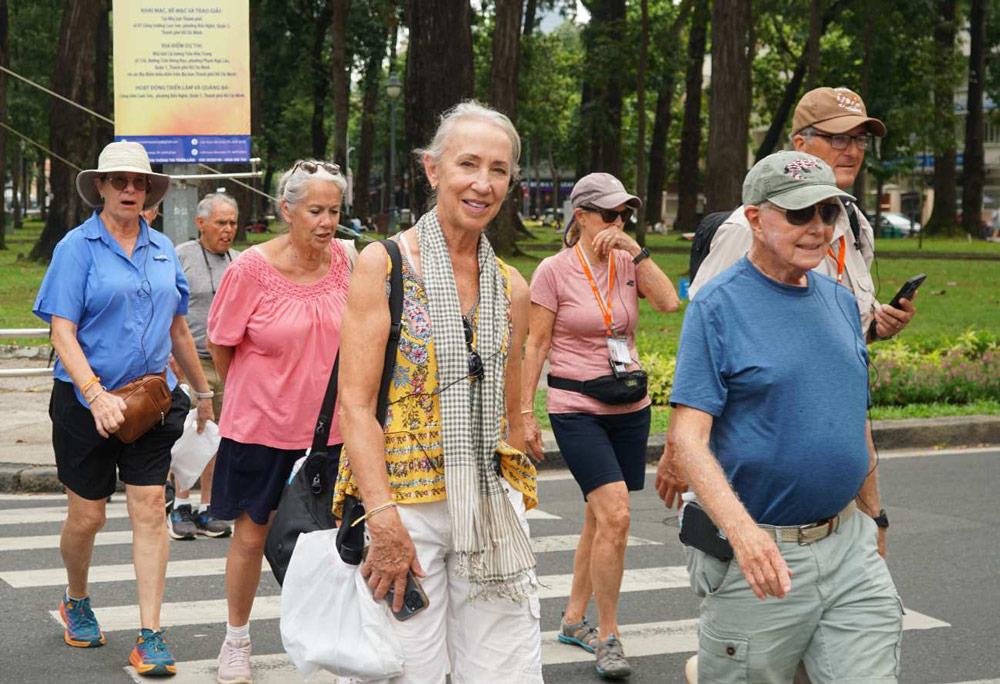Ho Chi Minh City, a dazzling hub of Vietnamese culture, history, and mouthwatering cuisine, is calling your name! Imagine yourself immersed in the city's electric atmosphere, exploring historic streets, and savoring unforgettable flavors. But when is the best time to visit Ho Chi Minh City to truly make the most of your adventure? Choosing the right time can really elevate your experience, impacting everything from the weather you'll enjoy to the crowds you might encounter, and even your travel budget. Unlike cities with four seasons, Ho Chi Minh City boasts a tropical climate with two main acts: the wet season and the dry season. To help you pinpoint your perfect moment, this guide will walk you through the best time of year to visit Ho Chi Minh, considering everything from sunshine and showers to exciting festivals and your own travel style. Let's discover the best time to go to Ho Chi Minh City and start planning your dream trip!
To truly get the most out of your Ho Chi Minh City adventure, it's helpful to know a little about its tropical weather patterns. Unlike regions with four distinct seasons, Ho Chi Minh City experiences two primary seasons that shape the rhythm of the year: the dry season and the wet season. Each season offers a different vibe and set of experiences, so understanding these can be key to planning your ideal trip. Let's take a closer look at what each season brings to this dynamic southern Vietnamese hub.
The dry season in Ho Chi Minh City, stretching from December to April, is often hailed as the best time to visit Ho Chi Minh. Imagine bright, sunny days, pleasantly low humidity, and barely any rainfall – perfect conditions for exploring bustling markets, historical sites, and enjoying outdoor activities. It's no surprise that this period is the most popular with tourists, drawn by the idyllic weather. However, keep in mind that popularity comes with a couple of potential trade-offs: you might encounter higher prices for flights and accommodations, and the city's attractions can be more crowded. If you prioritize sunshine and comfortable exploration, and are prepared for a bit more hustle and bustle, the dry season could be your perfect window.
From May to November, Ho Chi Minh City embraces its wet season, transforming the landscape and offering a different kind of charm. During these months, expect hot and humid conditions, often punctuated by frequent afternoon downpours. While the idea of rain might sound like a deterrent, in Ho Chi Minh City, these showers are typically short-lived and refreshing, often arriving in the late afternoon and clearing up relatively quickly. Don't let the "wet season" label put you off! Visiting during this time has its own unique advantages. You'll likely encounter fewer crowds at popular sites, benefit from lower prices on travel and lodging, and witness the city and surrounding countryside flourish in lush greenery. If you're flexible with your plans and don't mind a tropical shower or two, the wet season can be a fantastic time to experience Ho Chi Minh City with a different flavor. And if you're wondering, "What is the rainy season in Vietnam?" in the south, this is it!
When planning your trip, it's useful to know the local time. Ho Chi Minh City, like the rest of Vietnam, operates on Indochina Time (GMT+7). So, setting your watch to Time in Ho Chi Minh City Vietnam is straightforward – it's 7 hours ahead of Greenwich Mean Time. This consistent time zone across the country simplifies travel logistics and helps you stay on schedule as you explore this fascinating corner of Southeast Asia.

Figuring out the best month to visit Ho Chi Minh City really comes down to what you're hoping to get out of your trip! Are you chasing that postcard-perfect weather for non-stop sightseeing? Or are you more interested in stretching your budget further or escaping the tourist throngs? Ho Chi Minh City offers different charms throughout the year, and aligning your travel dates with your priorities can make all the difference. Let's explore the ideal months to visit based on what's most important to you.
If you're dreaming of sunshine-filled days and comfortably dry conditions, then mark your calendar for December to February. This period is widely considered to offer the best month to visit Ho Chi Minh. Imagine exploring the city under clear blue skies, with a gentle warmth that's just right for wandering through markets, parks, and historical sites. During these months, the humidity drops, and rainfall is minimal, creating truly delightful weather for all your adventures. If you're asking yourself, "What is the best month to visit Ho Chi Minh?" and pleasant weather tops your list, then aim for this dry season window.
Travel dreams don't have to break the bank! If you're keen on finding more affordable options for your Ho Chi Minh City getaway, consider traveling during the shoulder months or even the wet season. The shoulder months, such as April, May, September, and October, often present a sweet spot. You might still catch some pleasant weather, and importantly, you're more likely to find lower prices on flights and accommodations compared to the peak dry season. For the most budget-friendly adventure, the wet season (May to November) can unlock even greater savings, allowing you to experience Ho Chi Minh City's vibrancy without straining your wallet.
If the idea of navigating through bustling tourist crowds doesn't appeal to you, then planning your visit for the wet season (May to November) could be your ideal strategy. While you might encounter some afternoon showers, you'll also be rewarded with a less crowded experience at popular attractions and a more relaxed atmosphere overall. Exploring museums, temples, and markets becomes a more intimate affair when you're not surrounded by large groups, allowing you to connect with the city at your own pace. Choosing to visit during these Ho Chi Minh City off-peak months can offer a unique and quieter perspective on this dynamic destination.
If you're hoping to immerse yourself in Vietnamese culture and festivities, keep an eye on the calendar! The most significant festival is undoubtedly Tet, the Lunar New Year, a vibrant and important celebration that usually falls in late January or February. Experiencing Tet in Ho Chi Minh City is an unforgettable cultural immersion, with bustling flower markets and festive decorations. However, it's worth noting that many businesses do close during Tet, so plan accordingly if you visit during this time. Beyond Tet, Ho Chi Minh City hosts various other festivals throughout the year, each offering a glimpse into local traditions and celebrations. While these festivals can add a special dimension to your trip, they might also impact availability and prices, so it's always wise to check the festival calendar as you plan your visit.
January in Ho Chi Minh City is a delightful escape from colder climates! Expect average highs of 31°C (88°F) and comfortable lows around 21°C (70°F). Rainfall is at its absolute minimum, barely registering at around 13mm, and humidity is wonderfully low.
February continues the dry season bliss. Temperatures are very similar to January, with average highs of 32°C (90°F) and lows of 23°C (73°F). Rainfall remains incredibly low at about 4mm, and humidity stays comfortable.
March sees a slight nudge upwards in temperatures. Average highs climb to 33°C (91°F) and lows to 24°C (75°F). Rainfall starts to inch up, but is still very low at around 13mm, and humidity remains manageable.
April marks the transition into the hotter months. Average highs reach 34°C (93°F) and lows stay around 25°C (77°F). Rainfall increases a bit to about 48mm, and humidity is slowly rising.
May is when the wet season starts to make its presence known. Average highs remain hot at 33°C (91°F), and lows are around 25°C (77°F). Rainfall jumps significantly to approximately 210mm, and humidity is definitely on the rise.
June is fully in the wet season swing. Expect average highs of 32°C (90°F) and lows of 25°C (77°F). Rainfall is heavy, averaging around 310mm, and humidity is high.
July is typically the wettest month in Ho Chi Minh City. Temperatures are consistent with June, with average highs of 31°C (88°F) and lows of 24°C (75°F). Rainfall peaks at around 320mm, and humidity remains very high.
August is very similar to July. Average highs are around 31°C (88°F) and lows 24°C (75°F). Rainfall is still very high at approximately 290mm, and humidity remains oppressive.
September marks the beginning of the transition out of the wet season. Temperatures remain warm, with average highs of 31°C (88°F) and lows of 24°C (75°F). Rainfall starts to decrease to around 250mm, and humidity begins to lessen slightly.
October continues the transition towards the dry season. Average highs are around 31°C (88°F) and lows 24°C (75°F). Rainfall decreases further to approximately 190mm, and humidity is noticeably lower than in the summer months.
November is a delightful month in Ho Chi Minh City, often considered a shoulder season gem. Average highs are 31°C (88°F) and lows 23°C (73°F). Rainfall drops significantly to around 117mm, and humidity is comfortably lower. Wondering "Is November a good time to visit Ho Chi Minh City?" – absolutely!
December welcomes the full swing of the dry season back to Ho Chi Minh City. Average highs are 31°C (88°F) and lows 22°C (72°F). Rainfall is minimal, around 28mm, and humidity is low and comfortable.
While Ho Chi Minh City is a year-round destination with its own unique appeal in every season, there are certain periods that might present a few more challenges for some travelers. Knowing about these potential drawbacks can help you make the most informed decision about the timing of your trip, ensuring your Vietnamese adventure is as smooth and enjoyable as possible. Let's take a look at a couple of periods where you might encounter some travel hurdles.
If you're not a fan of heavy downpours and consistently humid conditions, you might want to think twice about visiting Ho Chi Minh City during the peak wet season, which falls between June and August. These months experience the heaviest rainfall of the year, and while the showers are often intense but relatively short, they can still disrupt your sightseeing plans and make getting around a bit more challenging. Adding to the mix is the high humidity, which can make the already warm temperatures feel even more intense. For those wondering about the worst time to visit Ho Chi Minh City purely from a weather perspective, this peak rainy season might just be it. However, if you're prepared for tropical showers and don't mind a bit of humidity, you can still enjoy the city in a quieter, greener setting, often with the bonus of lower prices.
Experiencing Tet, or the Vietnamese Lunar New Year, is undoubtedly a culturally rich and fascinating experience. The city comes alive with vibrant decorations and festive energy. However, if you're primarily focused on seamless travel and business as usual, Tet might present some logistical hurdles. While it's a time of joyous celebration for locals, many businesses, restaurants, and even some attractions often close down for an extended period during Tet, as people travel to be with their families. Furthermore, transportation both to and within the city can become heavily booked and more expensive, and prices for accommodations may also see a rise. While the cultural immersion of Tet is undeniable, if you prefer predictable opening hours and smooth travel logistics, you might consider planning your Ho Chi Minh City visit outside of this major holiday period.
OK, let's broaden our horizons a bit and look at Vietnam as a whole! While we've been focusing on Ho Chi Minh City, it's important to remember that Vietnam is a wonderfully diverse country with different climate patterns across its regions. So, if you're planning a trip that spans more than just the south, it's helpful to get a wider view of the best and worst months to visit Vietnam depending on where you're headed. Because Vietnam stretches across a long geographical range, the ideal time to visit one area might be quite different for another! For example, if you're including Hanoi in your itinerary, remember that autumn (September to November) and spring (March-April) are generally favored for their pleasant weather. However, if you're dreaming of exploring Central Vietnam, perhaps charming Hoi An or historical Hue, you'll find that February to August often offers the most agreeable conditions – just keep in mind that this region has its own rainy season from September to January. Understanding these regional nuances is key to crafting the perfect Vietnam adventure, ensuring you experience the best weather wherever your travels take you.

You might be wondering, "What is the coldest month in Ho Chi Minh City?" and the answer is often January. However, it's important to remember that "cold" is a very relative term here! Even in January, which is considered the chilliest time of year, you'll still experience delightfully mild temperatures. Typically, you can expect average highs around a warm 31°C (88°F) and comfortable lows settling around 21°C (70°F). So, while you might not need your winter coat, January in Ho Chi Minh City is the 'coolest' and perhaps most refreshing time to visit if you prefer slightly milder tropical warmth.

Knowing what to pack for Ho Chi Minh City is all about embracing its tropical climate and planning for comfort. Whether you're exploring ancient temples or navigating bustling markets, the right clothing choices will make your experience so much more enjoyable. Think light, practical, and ready for anything – from sunshine to sudden showers! Let's break down the essential packing tips to ensure you're perfectly prepared for the Ho Chi Minh City weather.
For Ho Chi Minh City's warm and often humid climate, lightweight and breathable clothing is your best friend. Natural fabrics like cotton and linen are excellent choices to help you stay cool and comfortable throughout the day. Since you'll likely be doing a lot of exploring on foot, comfortable walking shoes are an absolute must – think sneakers, supportive sandals, or anything that will keep your feet happy as you discover the city's many sights. And no matter when you visit, packing rain gear is always a smart move. A lightweight umbrella or a light raincoat can be a lifesaver, especially if you're visiting during the wet season, but even in the dry season, a surprise shower isn't out of the question!
When the dry season rolls around (roughly December to April), packing becomes wonderfully simple! Think shorts, t-shirts, breezy dresses, and comfortable sandals. These are your go-to staples for staying cool and stylish in the sunshine. While the days are warm, evenings can sometimes feel a little cooler, so it's a good idea to toss in a light sweater or jacket just in case. This will be perfect for those pleasant evenings spent strolling along the Saigon River or enjoying dinner outdoors.
Packing for the wet season (May to November) requires a slightly different approach, focusing on practicality and quick-drying fabrics. Quick-drying clothing is key – think lightweight synthetic materials that will dry rapidly if you get caught in a downpour. For footwear, waterproof shoes or sandals are excellent choices, allowing you to navigate puddles and wet streets with ease. While you'll still want to pack light and breathable clothes to combat the humidity, prioritizing items that can handle a bit of moisture will keep you feeling much more comfortable during the wetter months.
So, as we've explored, the best time to visit Ho Chi Minh City truly depends on your personal travel style! Whether you prioritize sunshine and clear skies, are hunting for the best travel deals, prefer to explore at a more relaxed pace away from the crowds, or dream of experiencing vibrant festivals, HCMC has a season to match. No matter when you decide to go, Ho Chi Minh City is guaranteed to captivate you with its dynamic energy and rich culture. Each season in this southern Vietnamese gem unfolds a unique chapter of its story, promising an unforgettable adventure.
Eager to dive into the heart of Ho Chi Minh City? Let Asia Mystika curate your perfect Vietnamese escape! Imagine a Vietnam tour package crafted precisely to your desires, with the insights of local experts ensuring a journey that's both authentic and enriching, all while offering exceptional value. Asia Mystika is your trustworthy partner in creating tailor-made experiences that go beyond the ordinary. Have you already fallen in love with Ho Chi Minh City in a particular season? Or are you brimming with questions as you plan your first visit? Let's contac us – we're excited to hear about your thoughts and help you design your dream Ho Chi Minh City adventure!



